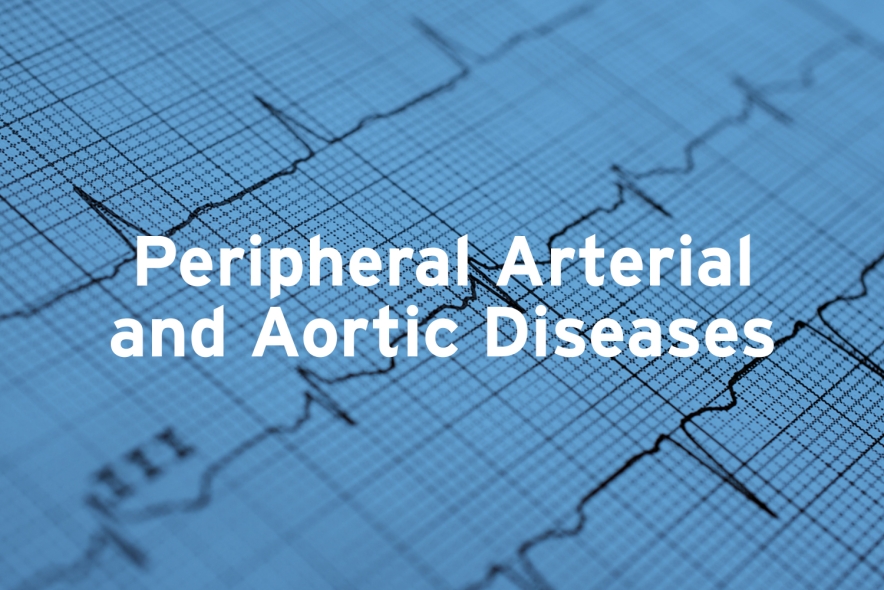2024 ESC Clinical Practice Guidelines for the Management of Peripheral Arterial and Aortic Diseases
02 Sep 2024
 Banner-Guidelines_PAAD-Name-1500x1000.jpg
Banner-Guidelines_PAAD-Name-1500x1000.jpg Today, Chairs of the Guidelines Task Force, Professor Lucia Mazzolai (Lausanne University and University Hospital - Lausanne, Switzerland) and Professor Jose F. Rodriguez-Palomares (Vall d’Hebron Hospital University Hospital and Autonomous University of Barcelona - Barcelona, Spain) presented new ESC Guidelines1 that update and merge 2017 peripheral arterial diseases and 2014 aortic diseases guidelines.
“The prevalence of peripheral arterial and aortic diseases (PAAD) is increasing and yet many patients are underdiagnosed and undertreated compared with patients with coronary artery disease. The new guidelines highlight the complexity of vascular disease that requires intensive holistic multidisciplinary management with long-term follow-up for effective management, addressing the entirety of the arterial circulation,” explains Prof. Mazzolai.
Early diagnosis is crucial for better outcomes. The new guidelines discuss different methods for examination of peripheral arteries and the aorta. Ankle-brachial index should be the initial diagnostic test for screening and diagnosing peripheral arterial disease, and it serves as a surrogate marker for cardiovascular (CV) and all-cause mortality. Duplex ultrasound is the first-line imaging method to confirm peripheral arterial lesions. Revised guidance is given on screening for abdominal aortic aneurysm (AAA) with duplex ultrasound.
“Patients with symptomatic PAAD are at very high CV risk and risk factor control is essential to prevent progression and complications,” comments Prof. Rodriguez-Palomares. “For example, supervised exercise training can improve walking and functional performances, and reduce CV risk. However, it remains underused and increased awareness of the benefits of appropriate physical activity is warranted.” Behavioural counselling is advocated in the guidelines to help promote a healthy lifestyle.
In a section on pharmacological medical therapy, reduction of low-density lipoprotein cholesterol (LDL-C) by ≥ 50% from baseline, with an LDL-C goal of <1.4 mmol/L (<55 mg/dL), is recommended in patients with atherosclerotic PAAD to reduce CV death, myocardial infarction and stroke, and to improve walking distance. Statins may be considered for the reduction of growth and rupture of AAA or thoracic aortic aneurysm. Tight glycaemic control (HbA1c <53 mmol/mol [7%]) is recommended to reduce microvascular complications in patients with PAAD. Patients with hypertension and PAAD should be managed according to the new 2024 ESC Guidelines.2
In a specific section on peripheral arterial disease, clinical presentation, diagnosis and treatment, including revascularisation, are discussed for lower extremities, extracranial carotid and vertebral artery disease, and other peripheral artery locations. A special focus on chronic limb-threatening ischaemia and management of patients with wounds is highlighted. Another section covers atheromatous disease, aortic aneurysms, acute thoracic aortic syndromes, and aortic genetic and chromosomal diseases, including Turner syndrome, Vascular Ehlers-Danlos syndrome, Marfan syndrome and Loeys-Dietz syndrome. Aortic disease associated with bicuspid aortic valves and coarctation of the aorta and aortic arch variants are also discussed.
A final section discusses polyvascular disease, which affects 1 in 4 to 6 patients with atherosclerosis and is associated with an almost doubled CV event risk compared with single arterial bed disease. This section also describes peripheral arterial disease co-existing with cardiac diseases, including heart failure, atrial fibrillation and aortic stenosis.
Prof. Mazzolai concludes: “While there are many areas where robust evidence for optimised evaluation and treatment of PAAD is still lacking, we hope that our recommendations based on current knowledge may add clarity and help to improve patient management.”
The 2024 ESC Guidelines are now published in the European Heart Journal and are available on the ESC Pocket Guidelines app.
References
- Mazzolai L, et al. 2024 ESC Guidelines for the management of peripheral arterial and aortic diseases. Eur Heart J. 2024. doi:10.1093/eurheartj/ehae179.
- McEvoy JW, et al. 2024 ESC Guidelines for the management of elevated blood pressure and hypertension. Eur Heart J. 2024. doi:10.1093/eurheartj/ehae178.




